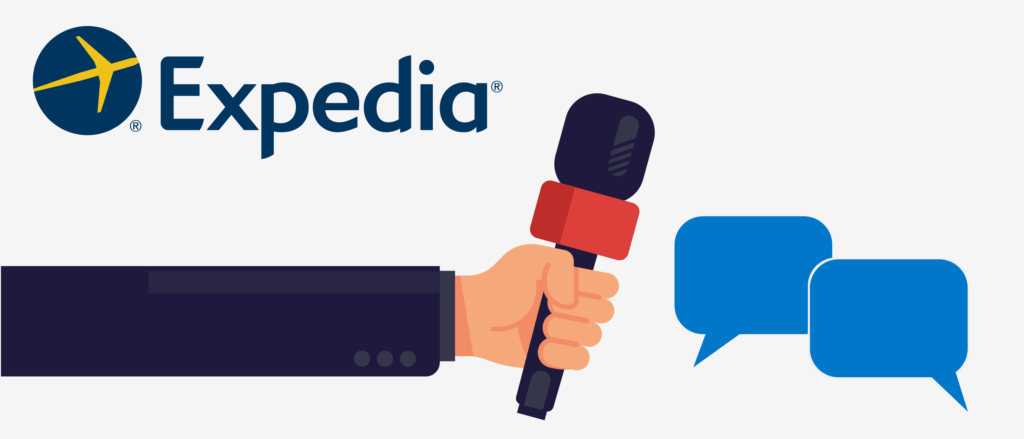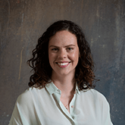I’ve been counting down the days until GAAD 2020 at Deque for a while now. But more importantly, I wanted to know what our customers are doing to commemorate this important day in the accessibility community. How are accessibility practitioners using GAAD to drive their programs forward and bolster support and awareness? And, how has their work been affected in recent months by the COVID-19 pandemic?
Fortunately, I was able to catch up with An Zheng, Senior Program Manager of Accessibility at Expedia, to get her insights.
In this Q&A, An answers some of my questions about her accessibility program, her philosophy around running a successful accessibility program during COVID-19, and her team’s plans for this year’s GAAD.
Q. How long has your accessibility program been established? How is your team structured?
A. Since 2014, Expedia’s Accessibility Team has led the way in designing and implementing a cross-functional program focused on providing accessible desktop and mobile products. We have worked to foster a corporate culture of accessibility and integrate accessibility best practices throughout the product development lifecycle in a manner that is scalable and leverages our global platform.
The team consists of four individuals: three accessibility SMEs and me (An Zheng, Program Manager). The accessibility experts are Karli Yeoman, Emma Hardman, and Trenton Lawton. Since we are a small team, decentralizing accessibility knowledge and empowering our product owners, UX designers, and developers to own accessibility as part of business as usual is critical to our success.

Q. Tell me a little about your team, your role at Expedia, and how it relates to accessibility.
A. As a small team of four, we work to equip, empower, and support Expedia in being an industry leader in its commitment to equal access by providing accessible products and fostering a culture where disability is seen as a valuable form of diversity. This comes in the form of hosting engagement activities, conducting assessments of our websites and native apps, developing training, and partnering with our UX and developer teams.
Since we are a small team, we work together to deliver on these projects. In my role, in particular, I focus on elevating the visibility of accessibility throughout our organization and driving accountability for addressing accessibility issues on our live site.
“Better code means better experiences for all people.”
Q. Describe the impact of accessibility on Expedia’s customers.
A. Accessibility is integral to Expedia’s purpose to bring the world within reach. By offering accessible products, we are able to better serve a customer base that generates $17.3 billion in the U.S alone and $95 billion dollars annually in disability travel.
Additionally, accessibility improves the overall customer experience. Following web content accessibility guidelines (WCAG) reinforces universal design principles and standards-compliant HTML. Better code means better experiences for all people.
Q. Describe a recent accessibility “win” for your team.
A. Since 2018, when we received approval from the National Federation of the Blind (NFB) on the accessibility of our product paths, we’ve worked to shift left and integrate accessibility throughout the product development lifecycle. We are working to empower product teams to own manual and automated accessibility testing as part of business as usual. This is going beyond the guidebook.
We want to empower our product teams to conduct quarterly tests and to discover and remedy the most common accessibility issues. It is a multi-year endeavor, to create self-managing and self-sustaining engineers who are both advocates for, and practitioners of, accessibility. But we believe it’s worth it.
Additionally, we’ve translated WCAG 2.1 AA guidelines into a simple set of requirements called the Expedia Accessibility Guidelines. In an effort to share what we’ve learned, we’ve published these guidelines externally to help others on their accessibility journey.
“As priorities shift, it’s important that accessibility stays top of mind and does not get ignored.”
Q. What resources do you rely on to stay up to date on a11y knowledge and best practices?
A. Staying plugged into the a11y community is critical to not just being compliant, but innovative in this space. Speaking with other Deque customers has been a great way to understand what other companies are doing in this space and how they’re tackling many of the same business problems. We also try to attend accessibility conferences (e.g., AccessU, CSUN, M-Enabling) to understand what’s going on in this space.
Q. How are you adjusting to the demands of COVID-19? What has changed and how are you continuing to make accessibility a priority?
A. The travel industry has been heavily impacted by COVID-19 and we are working diligently to address customer concerns and ensure a seamless customer experience. Our product teams are extremely busy right now rolling out new features so customers can seamlessly interact with us.
As priorities shift, it’s important that accessibility stays top of mind and does not get ignored. This requires the team to continually reiterate our business case for accessibility. We’ve seen great leadership support around this as our team has been heavily engaged in consultations around the new product features that are being rolled out as a result of COVID. We’ve started a great partnership with UX in reviewing their designs with the goal of catching accessibility issues before it hits the live site.
“The success of our program is dependent on empowering Product, UX, and developers to own the accessibility of their products.”
Q. What are you doing for Global Accessibility Awareness Day (GAAD) this year? How are you using the day to drive your accessibility program forward?
A. We’re excited to be hosting Expedia Group’s 5th annual celebration of GAAD! This is an instrumental event in helping us raise awareness for making the internet more inclusive to people with different disabilities.
Through this event, we hope employees will better understand what it’s like to use a website as one of the one billion people who live with a pervasive cognitive, motor, visual or hearing disability, like epilepsy, blindness, deafness, dyslexia, and color blindness.
To celebrate this year, we will be hosting an online activity to help employees understand what it’s like to interact with the web when you have a disability, a customer panel, as well as “Intro to Accessibility” training for developers, UX designers and anyone who wants to learn more.
Q. What advice would you give to other organizations who are just getting started building their accessibility program?
A. Accessibility is a journey, not a destination. The success of our program is dependent on empowering Product, UX, and developers to own the accessibility of their products.
For those who are just starting out, I’d stress the importance of having leadership buy-in on the importance of integrating accessibility throughout the product development lifecycle. Where possible, it’s important to not just focus on assessments, but shift left in the product development lifecycle by meeting with product and reviewing UX designs. This allows you to be more proactive and catch accessibility issues before they impact the customer.
Big thanks to An Zheng and her team for answering some of my questions. Wishing everyone a happy and empowering Global Accessibility Awareness Day this Thursday, May 21st.

